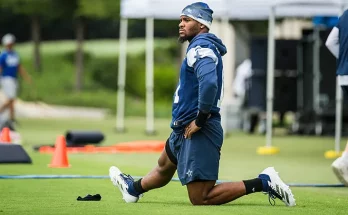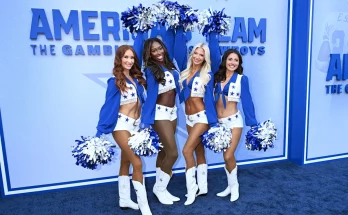The quarterback position has always been one of the most scrutinized roles in sports, and in college football, it carries an almost mythical weight. The players who line up under center are tasked not just with running an offense, but with being the symbolic leaders of entire programs, often serving as the faces of their universities. In 2025, the college football world is paying close attention to two young quarterbacks whose names are already synonymous with expectations, talent, and promise: Julian Sayin and Arch Manning. Both are stepping into the spotlight at the same time, and while each has the pedigree, skill set, and mental toughness to excel at the highest level of the college game, the reality is that the nature of competition ensures only one can truly rise above the other when it comes to defining an era. Their parallel journeys provide one of the most compelling storylines in modern football, offering fans and analysts alike a chance to witness the forging of legends in real time.
Arch Manning’s last name alone makes him an instant focal point of the sport. Being the nephew of Peyton and Eli Manning and the grandson of Archie Manning, Arch inherited a legacy that is both a blessing and a curse. His every move is measured against the extraordinary accomplishments of his family members, and while that puts him in the spotlight in ways few athletes can fully comprehend, it also places a heavy burden on his shoulders. Arch, however, has shown that he is not just another Manning but a uniquely talented quarterback in his own right. At 6-foot-4 with excellent pocket presence, fluid mechanics, and the calm confidence that runs in the family, he entered college football already being hailed as the most famous recruit of his generation. But fame and lineage don’t guarantee success, and that is where the intrigue lies: how far can Arch go when the bar has already been set so impossibly high by those who came before him?
Julian Sayin, on the other hand, does not carry the burden of a last name known to millions, but what he does carry is the reputation of being one of the most polished and technically sound quarterbacks in recent recruiting memory. A product of Southern California football, Sayin rose through the ranks with a reputation for precision, intelligence, and an uncanny ability to read defenses at a level beyond his age. Where Arch Manning might draw attention because of the Manning lineage, Sayin has demanded it simply by being the better player on the field time and time again. He has been described as a quarterback who blends modern athleticism with old-school fundamentals, equally capable of launching a deep ball with perfect touch or executing a quick, rhythm-based offense with ruthless efficiency. For him, stepping into the spotlight is less about living up to a family name and more about carving out his own—proving that greatness can come from work ethic, talent, and self-made opportunity rather than birthright.
When comparing Arch Manning and Julian Sayin, the conversation inevitably turns toward style and identity. Manning’s game is rooted in tradition: he plays with the poise and rhythm of a classic pocket passer, carrying echoes of Peyton’s surgical reads and Eli’s understated resilience. His ability to stay calm under pressure is uncanny, and his football IQ, sharpened by years of family tutelage, gives him an edge in breaking down defenses. Yet, there are questions about his mobility and whether he can consistently extend plays in today’s college football, where dual-threat quarterbacks often define the landscape. Sayin, by contrast, embodies the modern quarterback prototype. He is quick on his feet, comfortable rolling out of the pocket, and dangerous both as a passer and as someone who can escape pressure to make a play on the run. His versatility makes him a nightmare for defenses that cannot simply rely on collapsing the pocket. In this way, Sayin represents evolution while Manning represents legacy, and their simultaneous rise highlights the tension between tradition and innovation in football.
Another critical element in determining who rises above is the context of their environments. College football is not played in a vacuum, and the systems, coaches, and supporting casts that surround these quarterbacks will inevitably shape their paths. For Arch Manning, being part of a program with immense national visibility adds both opportunity and pressure. His games will be broadcast to millions, and every mistake magnified. This means that if he thrives, the rewards will be monumental, but if he falters, the scrutiny will be merciless. Sayin may find himself in a slightly different environment, one that allows him to develop within a system that maximizes his unique skill set rather than trying to force him into a mold. If his coaches lean into his adaptability and creativity, he could rise above Manning not just by raw numbers, but by becoming the more complete and dynamic quarterback in the eyes of fans and scouts.
The psychological aspect also cannot be ignored. Arch Manning has been in the spotlight since high school, with cameras following his every throw and endless debates about whether he could live up to the Manning legacy. He has carried that weight with remarkable maturity, but pressure is an invisible opponent that tests even the best athletes. The higher the expectations, the thinner the margin for error. Sayin, meanwhile, has had the luxury of rising without the same level of media saturation. While he has been celebrated as a top recruit, the lack of a famous last name has allowed him to focus on refining his craft without constantly being asked about comparisons to uncles or grandfathers. This difference in external pressure could play a decisive role in who ultimately emerges as the dominant figure of this era.
When projecting their futures, one cannot ignore the NFL, since both players are widely expected to become professional prospects if their college careers unfold as anticipated. Arch Manning, should he succeed, will enter the league as the heir apparent to the Manning dynasty, and franchises will see him not only as a player but as a brand. Sayin, conversely, will be evaluated purely on his performance, which may actually work in his favor. NFL teams value quarterbacks who can adapt to the modern game, where athleticism, improvisation, and mobility are often the difference between success and failure. If Sayin continues to display those traits, he could enter the draft process as the more coveted prospect despite not having the same brand recognition as Manning.
It is also worth noting that rivalries like this tend to elevate both players. In the history of football, great quarterbacks often define themselves not just by what they do alone, but by who they measure themselves against. Think of Peyton Manning and Tom Brady, or Joe Montana and Dan Marino. Each player’s greatness became more profound because of the other. For Julian Sayin and Arch Manning, their simultaneous rise ensures that their careers will always be linked, creating a narrative in which one’s triumphs will be compared to the other’s struggles. If Arch throws four touchdowns in a marquee matchup, Sayin’s performance that same weekend will inevitably be juxtaposed against it. This dynamic creates a crucible of competition that can push both to greater heights, but it also means that only one will truly emerge as the symbol of his generation.
Ultimately, deciding who rises above the other will not come down to a single trait, a single season, or even a single game. It will be the culmination of years of work, development, and performance under the brightest lights. Arch Manning’s path to the top will require proving that he is not simply carrying the Manning torch but forging a legacy of his own. Julian Sayin’s path will require turning his immense talent into consistent production at the highest levels, demonstrating that he can not only compete with Manning but surpass him. Both have the tools to succeed, but history teaches us that football’s spotlight is unforgiving, and while two quarterbacks can be great, the narrative almost always elevates one above the rest.
The beauty of this storyline is that the outcome is unwritten. Arch Manning and Julian Sayin are not yet finished products; they are works in progress whose potential is being tested with every snap. For fans, this is a rare gift: the chance to watch two highly touted quarterbacks grow side by side, each trying to outshine the other in a battle that will span seasons. In the end, the answer to who rises above may not simply be about numbers or victories but about who captures the imagination of the sport, who commands the respect of teammates, who proves unshakable when the pressure is at its peak. Both are stepping into the spotlight, but the very nature of competition ensures that only one can stand taller when history looks back on this era. Whether it is the scion of the most famous football family in America or the self-made phenom from California, the next few years will determine which name becomes synonymous with greatness.



